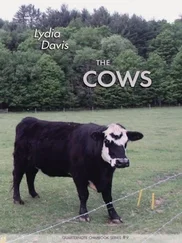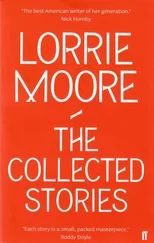In the yard, she would rake the leaves and pick up the sticks that dropped from the many overhanging trees; in winter, she shoveled at least some of the snow. Family would help only with the heavier jobs: a visiting son would trim the hedge, bring the porch furniture up from the basement, put on or take off storm windows. A grandchild would sometimes help with the leaves or the sticks. If there was an unusual problem she could not handle, such as squirrels in the attic, one of her sons would help. If there was an emergency, such as a fire in the chimney, she would call her next-door neighbors.
All these various activities continued until she entered the nursing home at age ninety-one.
Whereas Vi is still active, Helen now spends the better part of her day sitting in a chair by her bed. She must deliberately seek exercise: with a nursing home aide or volunteer, or a family member, she walks all the way around the nursing home, which is laid out in the shape of a diamond surrounding an open-air courtyard. Leaning on her walker, she heads off in one direction or the other, past the residents’ rooms, most of them doubles, past the hairdressing salon (hours posted on the door), past the doors out to the courtyard, the front lobby and the stained-glass swinging doors into the chapel, a lounge with a large-screen television and a card table, a nurses’ station, another passage leading to the courtyard, the recreation room, the residents’ showers, the dining room, another nurses’ station, the staff lounge with its locked door and its snack and soda machines visible through a window, another residents’ lounge with a smaller television and a bookcase, the kitchen, and more residents’ rooms, until she reaches her own room again. Here she parks her walker, backs up to her chair, bends to grip its arms, and sinks down into it saying “Ah” with a smile, relieved that the walk is done.
Hope, too, deliberately seeks her exercise: she takes her walker out into the long hall of her apartment building with its smell of fresh plaster; and with a friend, a family member, or her paid companion by her side, she walks a set number of times to the windowed door at the far end and back to the identical windowed door at the near end, sometimes encountering a neighbor along the way. She then returns to her apartment, lies back on her old blue sleigh bed with its litter of books and magazines, papers and notebooks, purse, tray table, and ragged cloth napkin, and rests for a moment before continuing her exercise with a set number of arm and leg lifts. When she is done, she asks for her water to be refilled; she must have water in two glasses by her bedside, one half full, next to her, the other full, at arm’s length.
Present Living Situation
Helen’s house is a large one, with four floors that were once in constant use: a basement for storage and laundry, a ground floor with kitchen, dining room, two parlors, a small bathroom, and Helen’s bedroom; a second floor with another kitchen, a large front room, two bedrooms, and a larger bathroom; and an attic floor containing one bedroom and one storeroom.
Though Vi’s house is smaller than Helen’s, it, too, has a basement, a ground floor, a second floor, and an attic. And like Helen’s, it has a second kitchen on the second floor, part of a self-contained apartment created for rental. Three generations of a family lived there at one time: a grandfather, granddaughter, and the granddaughter’s child.
Vi’s house is in a pleasant, integrated neighborhood of modest but attractive and generally well-cared-for older houses that sits high above the confluence of a wide creek and an estuary, though most of the houses do not have a view of the water. Many are single-family houses, with their own well-tended yards. Many, like Vi’s, are of brick, since the manufacture of bricks was once a dominant industry of the region, while some are of clapboard. Vi’s house is painted white, and the eave of her enclosed front porch is lined by a black-and-white-striped metal awning. Her yard contains a small patch of lawn in front and a larger square of lawn in back by the garage. It is bordered by a low hedge along the driveway, and is ornamented by a variety of perennial plantings, including several clumps of phlox, a few hostas, and one rosebush.
Vi’s house and Helen’s are both clean and tidy, but whereas Helen’s rooms are, some of them, remarkably empty, Vi’s are crowded. One upstairs bedroom in Helen’s house, for instance, contains nothing but a single bed, a folding wooden chair, and a lamp; the closet is empty, the windows curtainless, and the floor and the walls bare. Even in the reception rooms downstairs, very few decorative objects are in evidence. In the back parlor, the end tables by the sofa display only two: one a delicate Venetian glass vase brought back to her from Italy by her younger son; the other of unknown provenance and harder to classify — a teacup and saucer knitted from blue and white cotton. Every room in Vi’s house, on the other hand, is filled with knickknacks, whatnot tables, easy chairs, heavy rugs and drapes, lamps, stacks of storage boxes, and vases of artificial flowers.
Whereas Vi’s walls are covered with photographs and plaques awarded to her by her church, Helen has only three or four photos on display in each of her two parlors, her bedroom, and the upstairs guest room; she possesses many more, but keeps them in albums or boxes in bureau drawers. Vi has perhaps seventy to eighty photos hanging on the walls or standing on the surfaces of, particularly, her living and dining rooms. Both Vi and Helen display pictures of grandparents, parents, brothers and sisters, husbands, children, grandchildren, and friends. In addition, Vi likes to display pictures of her employers’ pets, though not her employers themselves. Because one of Helen’s sons is an artist, her parlor walls are hung with his paintings, the earlier ones figurative and the later ones abstract. These contrast noticeably in spirit with such odd, occasional knickknacks as the knitted cup and saucer.
Vi’s closets are packed with clothes, some of which she has not worn in years. (When she wants to describe a closet full of clothes all in a mess, she says they “walk out of the closet and say how de do!”) The organizer of a recent church fashion show made a visit to Vi’s house to search these closets and created a good number of outfits from them. Helen’s closets, on the other hand, are spare and reduced to the essentials, containing mostly just a few simple, functional, everyday clothes: cardigans, blouses, shirt-waist dresses, skirts, and housecoats. Some of these clothes came as gifts from her family at Christmas and birthdays, but often they are clothes that she has worn for years, sometimes passed on to her long ago by a friend, her sister, or her sister-in-law. She can afford to buy new clothes, but a long habit of thrift makes her see such expenditure as rarely necessary. She seems perfectly content with what she has.
Unused clothing is stored in the spare rooms of Helen’s house. In a bureau drawer in a guest room is a box containing a bed jacket or nightie that she has been given as a gift. A closet in one upstairs bedroom and a rack in the attic contain a small number of seasonal outfits that she is not wearing at the moment. When the season changed, she used to bring these down to replace the clothes in her bedroom closet; now she asks someone else to bring the clothes to her in the nursing home. When she still lived at home, she was continually sorting through what she had and reducing it further. She would come down with her slight stoop and her small steps from an upstairs room or the attic carrying an item of clothing or a piece of table linen or a brooch: “Could you use this?” she would ask.
Helen’s house was always tidy, because she cleaned up right away. She had a place for each thing and she put it away in its place as soon as she was finished using it. There was one exception to this practice: instead of carrying an empty cardboard box down to the cellar and putting it away immediately, she would toss it down the cellar stairs and put it away the next time she went down — in this one case valuing economy of motion over tidiness. Tidiness is her habit, but she does not preach it, whereas Vi readily tells a child or young person that it is important to put his or her things away in order to know where to find them again. Vi’s house is so much more crowded than Helen’s that it does not look as obviously tidy as Helen’s.
Читать дальше












